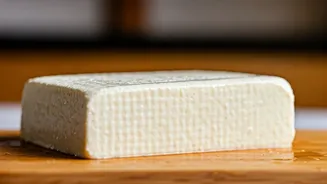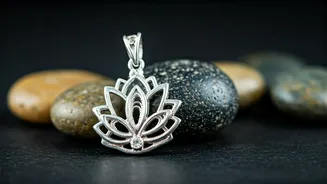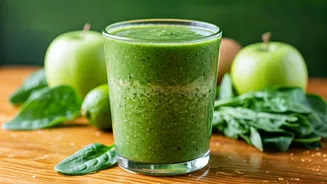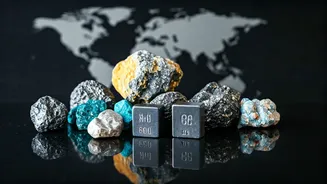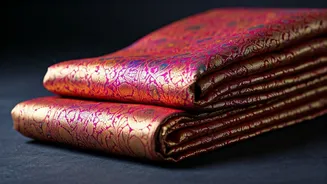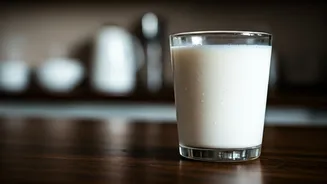The Paneer Puzzle
The popularity of paneer, a fresh Indian cheese, has unfortunately made it a target for adulteration. 'Fake paneer,' or paneer analogues, are often produced
with cheaper ingredients, such as vegetable oils, starch, and even chemicals, to mimic the texture and appearance of real paneer. This practice is driven by the desire to cut costs and increase profits, but it presents serious risks to consumer health. The creation of such substitutes, which may not undergo the same stringent quality checks, means that consumers may unknowingly be exposed to contaminants or substandard ingredients. This article provides information about identifying these counterfeit products to protect yourself and your family.
Visual Inspection Matters
One of the initial steps in identifying fake paneer involves careful observation. Real paneer typically has a slightly off-white color and a firm but pliable texture. Counterfeit paneer often appears unnaturally white, with a rubbery or overly spongy consistency. Check the surface – does it appear smooth, or does it show any signs of excessive oiliness or stickiness? Authentic paneer will also usually have a slightly grainy texture. Fake paneer, made with different ingredients, will not have the same character and will be less likely to have such natural variations. By paying close attention to these visual clues, you can often eliminate suspect paneer from your selection.
The Texture Test
The texture of paneer provides a critical clue to its authenticity. Genuine paneer has a firm, slightly crumbly texture that holds its shape when cut. When you press it, it should be able to spring back slightly. Fake paneer often feels rubbery or overly soft, sometimes breaking down into a mushy consistency when handled. If you can, try cutting a small piece. Real paneer will cut cleanly, while the fake versions may crumble or feel unusually tough. Examining the texture and how the paneer reacts to pressure or cutting is an important step in determining the quality. Remember that the texture is often the most significant difference between real and fake paneer.
Aroma and Flavor Check
Authentic paneer boasts a mild, milky aroma. Counterfeit versions sometimes lack this fresh, dairy-like scent. The taste can also reveal much about the quality. Real paneer has a subtle, creamy flavor, which is enhanced when cooked. Fake paneer may taste bland, have a slightly chemical taste, or lack a distinct flavor profile. When purchasing, if possible, sample a small amount. Ensure you check for freshness by noting the smell. If it smells off, or too strong, it is a good indicator that it might be counterfeit. Do not hesitate to use your senses to determine whether the paneer you're considering is indeed the real deal.
The Water Test Explained
A simple water test can provide valuable insight into the purity of your paneer. Place a small piece of paneer in a bowl of hot water. Real paneer, being made from milk solids, will typically soften but will not dissolve entirely. The water might become slightly cloudy with a milky appearance. Fake paneer, particularly those made with non-dairy ingredients, may start to dissolve or leave an oily residue on the water's surface. Observing how the paneer reacts in water can offer you a clear indication of its composition. Although this test is not foolproof, it can be a useful tool when combined with other checks.
Why Fake Paneer Exists
The increasing popularity of paneer has created a demand that some suppliers try to meet by cutting corners. Fake paneer can be manufactured with cheaper ingredients, such as vegetable oils, refined flour, and even chemicals like bleaching agents. The use of these ingredients often allows manufacturers to sell the product at a lower cost, resulting in higher profit margins. The consumers, unaware of what they are purchasing, may get a product that is not up to par. Additionally, the lack of robust regulatory oversight in some areas enables these illegal practices. Because of all of these factors, identifying real versus fake paneer has become more critical.
Health Risks Involved
Consuming fake paneer poses several health risks. The use of low-quality ingredients or non-permitted additives can lead to foodborne illnesses and allergic reactions. Counterfeit paneer may also contain harmful substances that are detrimental to your health. The consumption of substances like starch and vegetable oil can pose additional dangers. Long-term exposure to certain chemicals can lead to serious health issues, underlining the importance of vigilance. By recognizing and avoiding fake paneer, consumers can protect themselves from these health risks and help to maintain their overall well-being.
Smart Buying Strategies
To protect yourself, adopt smart buying habits. Purchase paneer from reputable brands and trusted vendors. Always check the packaging for manufacturing and expiry dates, along with any certifications. If buying loose paneer, examine the appearance carefully and, if possible, feel the texture. Avoid paneer with an overly bright appearance or a rubbery texture. Don't be afraid to ask vendors about the origin of their paneer and how it is made. Prioritize buying from brands that provide comprehensive information about their products. Choosing wisely ensures you're not only getting the real product but also protecting your health.
